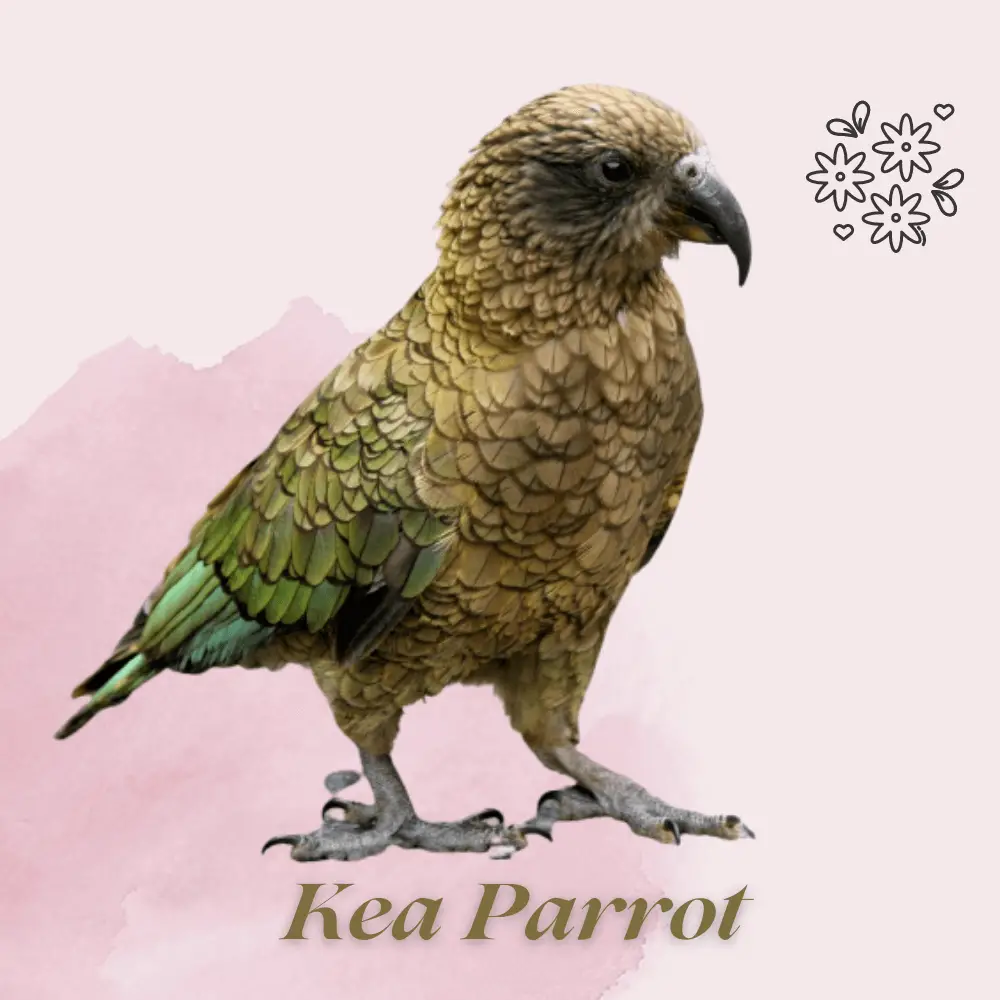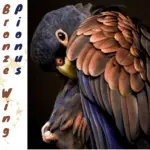
KeaNestor notabilis Scientific name definitions
- EN Endangered
- Names (14)
- Monotypic
dull blue; underwing-coverts reddish-orange with yellow barring and notching to bases of undersides of flight feathers; lower back to upper tail coverts dull reddish, scaled black;
tail above bronze-green with dark subterminal bar, below dull yellow with dark subterminal bar and buffy tips. Female slightly smaller, with a shorter, less curved bill. Immature has a yellowish crown, yellow cere
Systematics History
Monotypic.
Subspecies
Monotypic.
Distribution
Mountains of South I, New Zealand.
Habitat
Wooded valleys and Nothofagus forests bordering subalpine

scrublands at 600–2000 m, occupying the upper scrub and grassland zones in summer, moving higher for berries in autumn before descending below the timberline in winter.
Movement
Juveniles form wandering flocks in autumn.
Diet and Foraging
Changes through year. In Jan birds feed on flowering mountain flax (Phormium colensoi), rata (Metrosideros), and other trees and shrubs, then berries of snow totara (Podocarpus nivalis) from late Jan to coming of snow.
Other non-seasonally grouped foods include fruits of Coprosma ciliata, Cyathodes fraseri, Muehlenbeckia axillaris, Pentachondra pumila and Astelia nervosa, and leaves of Senecio scorzoneroides. Birds also take flesh and bone marrow from carcasses and scavenge in rubbish dumps.
Stick-tool use to retrieve food rewards has been described for birds in captivity.
Sounds and Vocal Behavior
The commonest call is a long and loud, descending nasal cry, which may be quavering and burry “kree-ee-ah-ah-ah” or more piercing, smooth and continuous “keeeeeaaaa” . Also a variety of more quiet contact calls, mostly nasal and whining.
Breeding
Chiefly Jul–Jan, although recorded at all times of the year except late autumn. Nest in crevices under rocks or in tree roots, or in a hollow log.
Eggs 2–4; incubation lasts 3–4 weeks; nestling period 13 weeks. Young males appear to disperse from the natal area, while young females remain; however, mortality in male birds appears to be very much higher,
since despite the polygynous mating system there generally appears to be a surplus of females, not males. As few as 10% of adult males may breed in any given year, this in part due to polygyny by dominant male birds.
Conservation Status

CITES II. Restricted-range species: present in South Island of New Zealand EBA. Estimating the Kea population size is difficult due to their extensive range, rugged terrain, low population density, cryptic behavior of adults and flocking behavior of juveniles.
A conservative estimate of one adult female per 2000 hectares of the forest gives a global population of 4000 mature individuals.
The total population was estimated very crudely at 1000–5000 birds around 1985, based on an assumed and unsupported density of 2–10 birds/84km², but other evidence suggesting 30·5 birds/84km² indicates possibly 15,000 birds, 1992; however, if Keas show higher densities around car-parks
refuse dumps and ski resorts then this figure may be far too high. Populations appear to be in decline, with population densities falling markedly in some areas.
Once seriously persecuted in the belief that birds kill sheep, with 150,000 culled between the late 1860s and early 1970s (including 6819 killed in the years 1943–1946) during a government-sponsored control scheme through payment of a bounty; now established that attacks on living sheep are extremely rare and only involve already injured or diseased animals.
Stoats now appear to be a major predator. Kea appears to be an essential species for seed dispersal in New Zealand alpine ecosystems, as it consumes more fruit and disperses more seeds than all other bird species combined and is the only one making frequent long-distance flights within and between mountain ranges. Considered ‘Nationally Endangered’ in New Zealand.




















